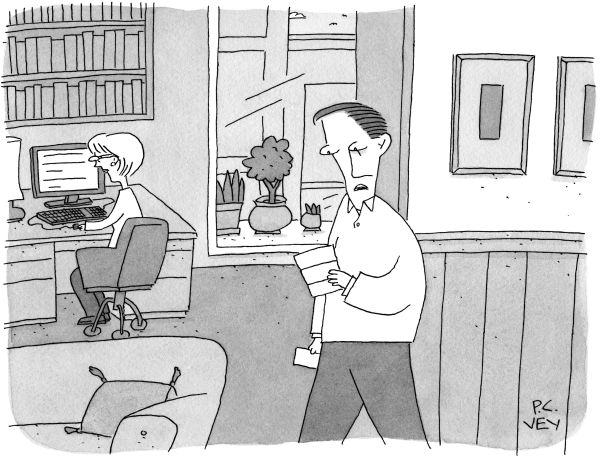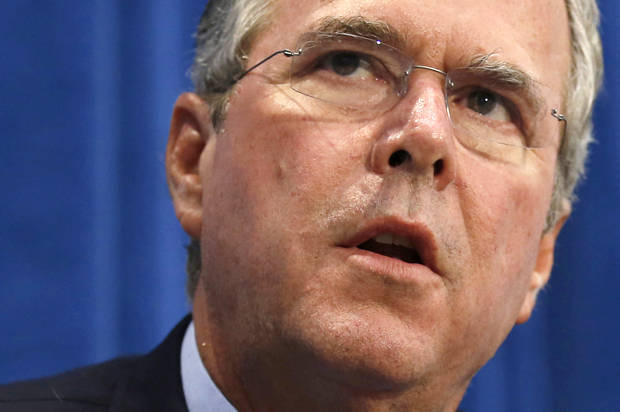— whose soigné, draped designs catapulted Lanvin to become a top Paris fashion house — has been ousted from the company after a stellar 14-year tenure.
The news was first reported on WWD.com on Wednesday morning Eastern Standard Time just as employees were being informed of his departure.
In a statement, Elbaz characterized his departure as a result of “the decision of the company’s majority shareholder” without naming Shaw-Lan Wang, the Taiwanese publishing magnate who recruited him to revive what she then described as a “sleeping beauty.”
He also hinted at the reasons for his breach with Wang, holding out hope that the company “finds the business vision it needs to engage in the right way forward.”
Lanvin issued a brief statement late Wednesday saying it had ended its collaboration with Elbaz and “would like to thank him for the chapter he has written” for the house.
It also confirmed “the implementation of its corporate strategic plan to continue making the oldest of the Parisian fashion houses the ambassador of French luxury’s excellence, in the independent spirit of its founder, Jeanne Lanvin.”
While Elbaz did not elaborate on his departure, sources said the rupture came following disagreements between the charismatic Israeli designer and company principals: Wang and chief executive officer Michèle Huiban.
It is understood members of Elbaz’s design team were informed of his exit prior to the general meeting, and told they would have to complete the pre-fall collection without him.
Many employees were said to be in tears at the meeting, rallying behind their creative leader and demanding an explanation from the company on its future plans.
Sources said Elbaz had emptied his office on the Rue du Faubourg Saint-Honoré on Tuesday night.
“I wish to express my gratitude and warm thoughts to all those who have worked with me passionately on the revival of Lanvin over the last 14 years; express my affection to all my wonderful colleagues in the Lanvin ateliers who accompanied me, and who enriched and supported my work,” Elbaz wrote, signing his letter with a heart and flourish of his pen. “Together, we have met the creative challenge presented by Lanvin and have restored its radiance and returned it to its rightful position among France’s absolute luxury fashion houses.
“I also wish to express my profound and deepest gratitude to all of the clients and friends, to the French and international press and to all those business partners who collaborated with Lanvin, providing support since 2001,” he continued. “I wish the house of Lanvin the future it deserves among the best French luxury brands.”
The development comes less than a week after Raf Simons resigned from Christian Dior after a three-and-a-half year stint, intensifying discussion about the pressures and restraints today’s creative directors face in an accelerating industry.
Elbaz’s departure from Lanvin is also likely to fuel speculation that he may ultimately succeed Simons at Dior — or at least widen the scope of another round of musical chairs at the highest levels of international fashion. Dior has yet to identify a successor, as reported, and sources suggested there has not been any recent talks between the couture house and Elbaz.
Prized for his couturelike craft and affable personality, Elbaz is believed to have held discussions with Dior when it was seeking a successor to John Galliano following his 2011 expulsion due to racist and anti-Semitic outbursts at a Paris café, for which he was convicted of public insult. Talks did not progress then partly because Elbaz had an ownership stake in Lanvin via a holding controlled by Wang, a stumbling block to a deal.
It could not immediately be learned if Elbaz is selling his stake as part of the exit package.
According to sources, tensions between Elbaz and Wang have been building in recent months, with the designer urging the Taiwanese publishing magnate to sell her majority stake and make way for a new owner that could better capitalize on Lanvin’s development potential.
However, Wang is seen as a reluctant seller, demanding a high price, and preferring to handpick a buyer well known to her.
Elbaz is said to have complained about a lack of a clear strategy and targeted investment, and about compromising the image of the brand in Asia by splashing the Lanvin name on products not typically associated with a luxury name.
The company’s consolidated sales have been eroding, expected to fall to around 200 million euros, or $221 million at current exchange, this year, versus a peak of more than 250 million euros, or $276.3 million, only a few years ago, according to sources, who noted that Lanvin is also poised to post its first loss in almost a decade.
Unlike many of its larger rivals, the brand — which marked its 125th anniversary last year — is dependent on its wholesale partners, which account for approximately 70 percent of revenues, with only about 30 percent of sales streaming in from direct retail.
It is understood management has not yet selected a successor to Elbaz, and will face the task of finding a designer who can re-galvanize a house built around his vision and ebullient personality.
Names on its short list could include young talents like Olivier Rousteing, Simone Rocha, Huishan Zhang and Joseph Altuzarra. Management might also consider Lucas Ossendrijver, tapped by Elbaz in 2005 to rejuvenate Lanvin Homme, echoing his use of couture fabrics and designs etched with industrial detailing. It is understood the Dutchman harbors ambitions to turn his hand to women’s wear.
Wang bought Lanvin from L’Oréal in 2001, recruited Elbaz and left him a free hand to reinvent the business with chic cocktail dresses, chunky costume jewelry, ballerina flats, dressy sneakers and modernist men’s wear.
While his first few collections fell under the radar, his fashion shows — typically with dramatic lighting, pounding techno and carnival refreshments — ultimately became among the highlights of Paris Fashion Week.
His rejuvenation of the house was built on a woman-first ethos and the dress, which ranks as one of the most important items of the new millennium, thanks partly to him.
“I said, ‘It’s all about zip-in and zip-out,” he said in an interview last year, reflecting on Lanvin’s anniversary, which it marked with an exhibition devoted to Jeanne Lanvin at the Palais Galliera museum here. “It was just about giving ease to women,” he said of his dresses with industrial zips and raw edges, two of the design signatures he established for Lanvin.
During his tenure, he transformed a business largely dependent on men’s wear to a leading designer brand for women, part of the vanguard in Paris that launched an enduring trend of couture-influenced French elegance.
Fond of musings on fashion, Elbaz often returns to the word “desire,” something he felt instinctively when he first visited the archive of the founding couturier, whose dresses from the Thirties are marvels of delicate femininity.
“I said, ‘You know we are going to make collections for women, we are going to actually emphasize the desire, the desire in fashion, the desire in design,’” he said in a 2012 interview. “I was very much into design because I came from the house of Geoffrey Beene, which was all about design, and then we pushed it also to desire, to women, to reality, to be relevant. I think to be relevant is the story of my life.”
Known for draping fabrics on the body and using fabrics to their best advantage, Elbaz recently emphasized the human hand in fashion by leaving stray threads and adding small rips and tears, a riposte to the flurry of Instagram posts and e-commerce sites that have given fashion a high-tech, impersonal sheen.
Born in Morocco, Elbaz learned his craft at Beene’s elbow in New York, emerging onto the international radar when he was recruited to helm Guy Laroche in Paris in 1996, a stint that won raves, media attention and the job offer of a lifetime: to succeed couture legend Yves Saint Laurent at the helm of Rive Gauche ready-to-wear.
After three seasons, Elbaz was fired in the wake of Gucci Group’s takeover of YSL, with Tom Ford picking up the design reins. Elbaz subsequently did one season with Krizia in Milan before sitting on the sidelines of the business for one year.
Once ensconced in Lanvin, Elbaz lauded the coziness of a small, privately held company and likened his attachment to Wang and to Lanvin as a marriage.
The intensely private 73-year-old Wang has in the past described Lanvin as a long-term investment, taking a hands-on approach to its development in Asia. Yet Wang has been spending less time in Paris recently, leaving the operational management to Huiban, named ceo in 2013.
Huiban, who joined Lanvin in 2008, had been deputy general manager of the company since 2011. She is a graduate of French business school ESSEC and worked mainly in the media before joining Lanvin.
Elbaz is said to have been alarmed by Wang’s reluctance to invest in developing the French house’s retail network and brand profile, crimping its traction in the face of larger and more robustly funded brands such as Saint Laurent, Chanel and Givenchy. Lanvin also has had fits and starts in its efforts to build a handbag business – a pillar of profitability for most European names.
In 2007, Wang sold Lanvin’s fragrance and cosmetics business to Inter Parfums SA for 22 million euros, or $24.3 million at current exchange, saying the company needed the funds to develop its rtw and accessories businesses. The investment community frowned on the move, as it diminished the valuation of the fashion house.
A trust associated with the Bartel family acquired 25 percent of Lanvin parent Arpège SAS in separate transactions in 2009 and 2012, and is said to have shared Elbaz’s opinion about the need to invest. Bartel holds certain preemptive rights should Wang wish to explore a sale of any of her shares.
Like Simons, Elbaz is sure to field a flurry of offers for his services – and evaluate them cautiously.
Picking up a Superstar award from Meryl Streep at Fashion Group International’s Night of the Stars last week, Elbaz turned his acceptance speech into a mini-manifesto lamenting how the warp-speed fashion system is chipping away at creativity, camaraderie and the industry’s sense of fun and glamour.
“We designers started as couturiers with dreams, with intuitions and with feelings. We started with, ‘What do women want? What do women need? What can I do for women to make their lives better and easier? How can I make a woman more beautiful?’ That is what we used to do,” he said.
“Then we became creative directors, so we have to create, but mostly direct. And now we have to become image-makers, making sure it looks good in the pictures. The screen has to scream baby — that’s the rule. And loudness is the new thing. Loudness is the new cool, and not only in fashion. I prefer whispering. I think it goes deeper and lasts longer.”
Meanwhile, one source speculated Elbaz had been contemplating some kind of digital reinvention.
At the FGI event, he mused about the phenomenon. “I was asked the other day, if I have a personal Instagram [account]. I said, ‘Not really’ and they said, ‘How come?’ I said, ‘I don’t really have photogenic friends; I only have good friends. I also do not take photos of the food. I eat food,’” he said. “But I’m addicted to Instagram and I love it. And I just met Kevin (Systrom), the founder of Instagram. And I loved him for being so smart — not just smart, but humble. That’s a nice combination.”
Source:





